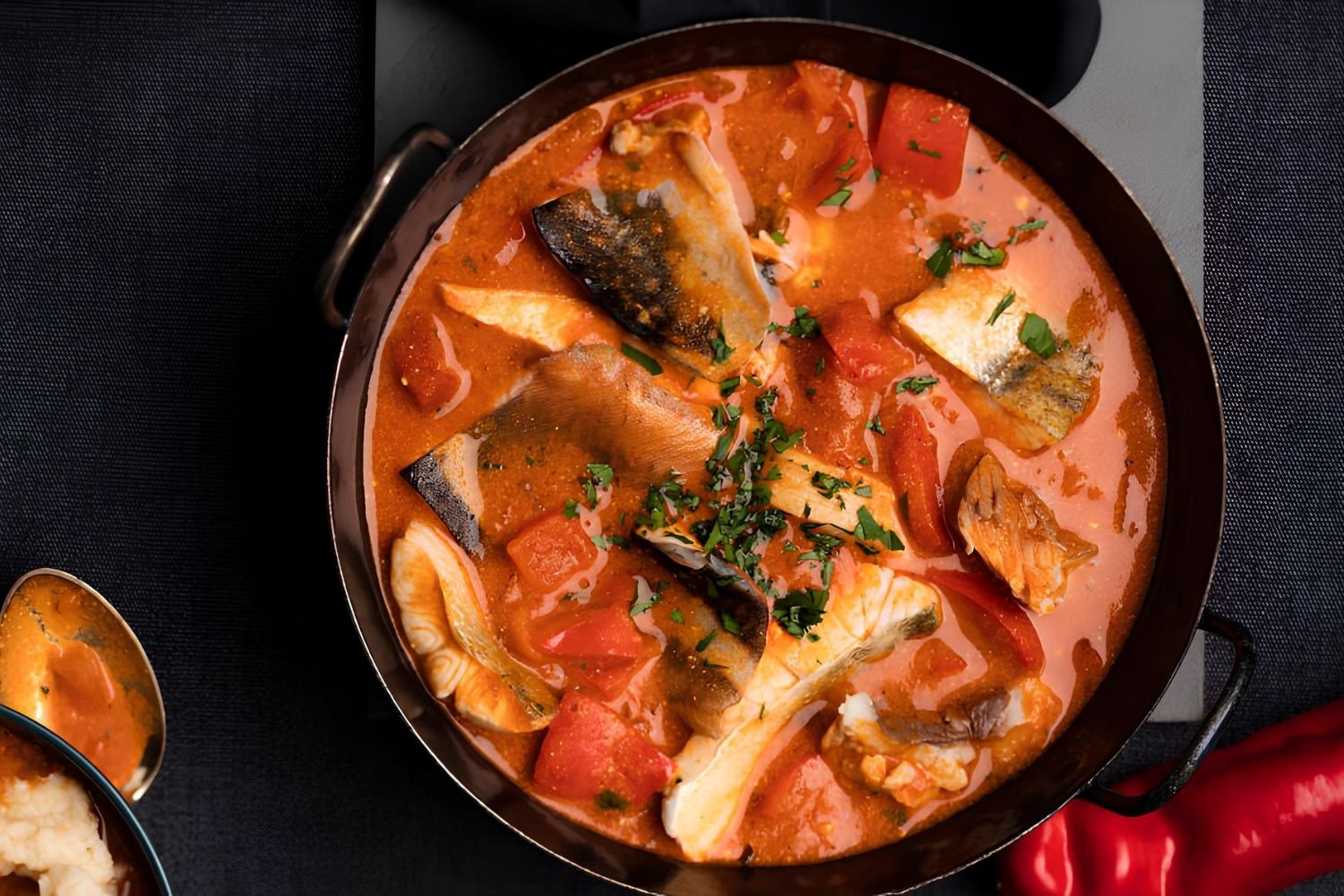
What is Halaszle? Halaszle, also known as Hungarian Fisherman's Soup, is a traditional dish that has been enjoyed for centuries. Made with fresh river fish, paprika, and other spices, this soup is a staple in Hungarian cuisine. Originating from the fishermen along the Danube and Tisza rivers, Halaszle is not just a meal but a cultural experience. It's typically prepared in a large pot over an open fire, giving it a unique, smoky flavor. Whether you're a foodie or just curious about different cultures, learning about Halaszle offers a delicious glimpse into Hungary's rich culinary heritage. Ready to dive into 34 fascinating facts about this iconic dish? Let's get started!
What is Halászlé?
Halászlé, also known as Hungarian Fisherman's Soup, is a traditional dish that has been enjoyed for centuries. This spicy, fish-based soup is a staple in Hungarian cuisine and has a rich history. Let's dive into some fascinating facts about this beloved dish.
-
Halászlé is a traditional Hungarian soup made primarily from freshwater fish, paprika, and onions.
-
The name "Halászlé" translates to "fisherman's soup" in English.
-
This dish is especially popular along the banks of the Danube and Tisza rivers in Hungary.
-
Halászlé is typically prepared in a large cauldron over an open fire, giving it a unique smoky flavor.
-
The soup is known for its bright red color, which comes from the generous use of paprika.
Ingredients and Preparation
Understanding the ingredients and preparation methods of Halászlé can give you a deeper appreciation for this flavorful dish.
-
Freshwater fish like carp, catfish, and perch are commonly used in Halászlé.
-
Hungarian sweet paprika is a key ingredient, providing both color and flavor.
-
Onions are another essential component, often used in large quantities to enhance the soup's richness.
-
Some recipes call for the addition of tomatoes and green peppers for extra flavor.
-
The fish is usually cut into chunks and added to the soup along with the bones, which are later removed.
Regional Variations
Halászlé can vary significantly depending on the region in Hungary where it is prepared. Each area has its own unique twist on the recipe.
-
The Szeged version of Halászlé is known for being particularly spicy and includes ground paprika.
-
In Baja, the soup is often served with homemade pasta called "gyufatészta."
-
The Paks variation includes a mix of different fish species for a more complex flavor.
-
Some regions add wine to the soup for an extra layer of taste.
-
In certain areas, Halászlé is made with a fish stock base, while others use water.
Cultural Significance
Halászlé is more than just a dish; it holds cultural significance in Hungary and is often associated with various traditions and celebrations.
-
Halászlé is a popular dish during Christmas Eve dinner in many Hungarian households.
-
The soup is often served at festivals and fairs, especially those celebrating fishing.
-
Fishermen's competitions sometimes include a Halászlé cooking contest.
-
The dish is considered a symbol of Hungarian culinary heritage.
-
Many families have their own secret recipes passed down through generations.
Fun Facts
Here are some fun and lesser-known facts about Halászlé that might surprise you.
-
Halászlé is often enjoyed with a side of bread for dipping.
-
Some people like to add a splash of vinegar to their soup for a tangy twist.
-
The dish is sometimes garnished with fresh parsley or dill.
-
Halászlé can be found on the menu of many Hungarian restaurants around the world.
-
The soup is known for its health benefits, being rich in protein and low in fat.
Modern Takes on Halászlé
While traditional Halászlé remains popular, modern chefs have started experimenting with new variations of the dish.
-
Some contemporary recipes include seafood like shrimp and mussels.
-
Vegetarian versions of Halászlé have been created using tofu and vegetable broth.
-
Fusion dishes combine Halászlé with other cuisines, such as adding Asian spices.
-
Gourmet versions of the soup might include exotic ingredients like saffron.
-
Some chefs serve Halászlé as a deconstructed dish, with the broth and fish presented separately.
Halászlé Around the World
Halászlé has made its way beyond Hungary's borders and can be found in various forms around the globe.
-
In Serbia, a similar dish called "Riblja Čorba" is popular.
-
Croatian cuisine features a fish soup known as "Brodet," which is similar to Halászlé.
-
In Slovakia, a version of the soup called "Halászlé" is also enjoyed.
-
Hungarian communities in the United States and Canada often prepare Halászlé for cultural festivals and gatherings.
The Final Scoop on Halaszle
Halaszle, or Hungarian fish soup, is more than just a dish; it's a cultural icon. Packed with rich flavors from paprika, onions, and fresh river fish, it’s a staple in Hungarian cuisine. This soup isn't just about taste; it’s about tradition, often enjoyed during festive gatherings and family meals. The preparation varies by region, with each area adding its unique twist. Whether you’re a culinary adventurer or just love trying new foods, halaszle offers a delicious dive into Hungary’s culinary heritage. So next time you’re looking to spice up your menu, give halaszle a try. You might just find a new favorite. Enjoy the warmth, the spice, and the history in every bowl. Happy cooking!
Was this page helpful?
Our commitment to delivering trustworthy and engaging content is at the heart of what we do. Each fact on our site is contributed by real users like you, bringing a wealth of diverse insights and information. To ensure the highest standards of accuracy and reliability, our dedicated editors meticulously review each submission. This process guarantees that the facts we share are not only fascinating but also credible. Trust in our commitment to quality and authenticity as you explore and learn with us.
